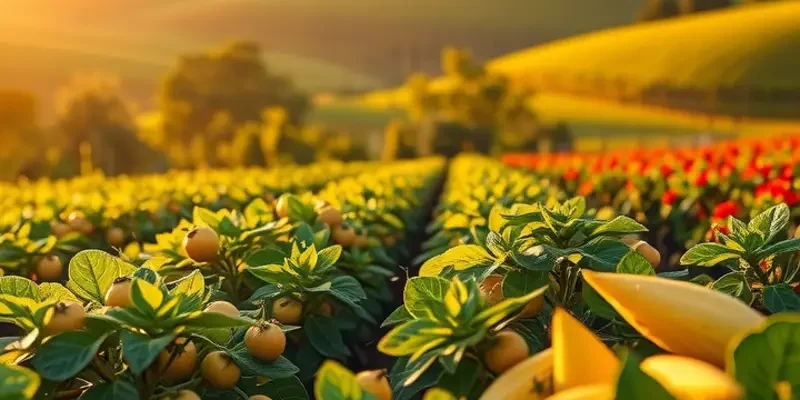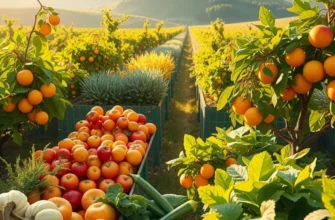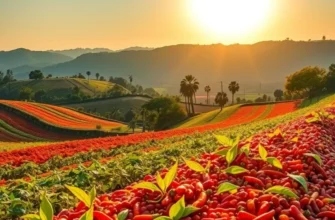Around the globe, the magic of food often lies in the sauces that elevate the simplest dishes. Each culture boasts its own signature flavors, techniques, and histories that inform their unique sauces. From the aromatic charm of Asia to the zest of Latin America, these culinary treasures reflect the heart and soul of their regions, inviting food enthusiasts and culturally curious minds to explore the narratives behind each blend. This journey through traditional global sauces will tantalize your taste buds and deepen your appreciation for the art of cooking.
Aromatic Adventures: The Sauces of Asia

Embark on a sensory journey through Asia, where sauces are the heart of culinary expression. The region’s sauces are the vibrant canvases on which chefs paint innumerable flavors, each stroke telling a tale of cultural heritage and innovation. Asia’s sauces are not mere accompaniments but central characters in the culinary narrative, elevating dishes to new heights of taste and complexity.
Soy sauce, with its profound umami, is a prime example of this transformational power. Originating from China, it has spread across borders, becoming a staple in households worldwide. Made from fermented soybeans, soy sauce is a quintessential flavor booster, enriching foods with a depth that defies its simplicity. Its salty profile is often complemented with notes of sweetness or acidity, forming the backbone of many Asian cuisines.
The indigenous chili of the Americas found its fiery home in Asia, inspiring a myriad of sauces that thrill the palate. Among these, sriracha stands out for its unique combination of heat and tang. This now-global phenomenon hails from Thailand, blending sun-ripened chilies with garlic, vinegar, and sugar. Its versatility makes it a favorite, adding a fiery punch to everything from pho to pizza.
Key ingredients like lemongrass and ginger often underpin these sauces, offering fragrant complexity. Lemongrass, with its lemony essence, refreshes dishes, making it a staple in Southeast Asian sauces like Thai nam prik. This versatile condiment can be fiery hot or subtle, acting as a dip for vegetables or grilled meats. Its adaptability allows it to straddle traditional and modern cuisines with ease.
In India, chutneys showcase the country’s vast culinary tapestry. These sauces vary from sweet to spicy, highlighting regional ingredients and preferences. A mango chutney, for example, delivers a sweet-tart experience, while coconut chutney pairs creamy textures with a hint of spice. Chutneys are often paired with savory snacks, like samosas or dosas, enriching them with complex flavors.
Techniques like fermenting further distinguish Asian sauces, adding layers of depth and preserving nutritional qualities. Fermented ingredients provide enrichment not only in flavor but also in health benefits, as explored in non-dairy probiotic guides. Such methods imbue sauces with unique character, allowing them to enhance not just flavor but well-being.
These sauces capture the essence of Asia’s diverse culinary ethos, drawing from local ingredients and ancient techniques. They serve as a bridge, connecting the past with the present, inviting gourmands to explore the many stories these sauces have to offer, one vibrant bite at a time. Even as they evolve, retaining traditions ensures that each splash of sauce reflects the rich tapestry of its origin, celebrating the cultural heritage of Asian cuisines.
Savoring Tradition: European Sauces That Define Cuisine

Europe is a continent rich in culinary diversity, and its sauces play a pivotal role in defining regional cuisines. Italian marinara, French béchamel, and Spanish romesco each tell stories of their origins, embodying the local ingredients and cultural traditions that make them unique.
Marinara sauce, a staple of Italian cuisine, is thought to have roots in Naples. Its name derives from ‘marinaro,’ meaning ‘of the sea,’ despite it being a tomato-based creation. The tangy blend of tomatoes, garlic, and herbs captures the essence of Southern Italy’s sun-drenched gardens. Marinara pairs perfectly with pasta, seafood, and even serves as a base for various Italian dishes. Its simplicity highlights the quality of ingredients, making it both traditional and versatile.
Moving to France, béchamel sauce stands as a cornerstone of classic French cooking. Often referred to as one of the “mother sauces” of French cuisine, béchamel’s rich, creamy texture results from a simple roux of butter and flour, to which milk is gradually added. It’s a fundamental component in dishes like lasagna and gratin. The versatility of béchamel allows for numerous flavor enhancements, with the addition of cheese turning it into a Mornay sauce, or an infusion of herbs giving it a fresh twist.
In Spain, romesco sauce showcases the bounty of Catalonia. This robust, earthy sauce combines roasted red peppers, tomatoes, nuts, and olive oil. Traditionally accompanying grilled seafood and meats, romesco is a testament to the region’s emphasis on combining textures and flavors. The use of almonds or hazelnuts in romesco adds a unique creaminess, balancing the smoky and sweet notes with a hint of chile pepper heat.
These sauces are more than just accompaniments. They embody entire culinary philosophies, with each helping to shape the identity of their native cuisines. The marinara’s celebration of fresh ingredients, béchamel’s embodiment of French culinary precision, and romesco’s embrace of rustic, earthy flavors each enhance dishes, creating cohesive culinary experiences.
Modern chefs continue to innovate, reimagining these classic sauces while maintaining their traditional essence. For instance, basil-infused marinara or vegan béchamel using plant-based milk provide new, exciting dimensions without losing authentic flavors. Exploring modern interpretations allows us to appreciate the adaptability and enduring appeal of these sauces.
The art of sauce-making is fundamental to understanding European culinary traditions. Each region’s distinctive approach to sauces reflects broader themes in its food culture. For those interested in crafting these storied sauces at home, ensuring proper storage and use of ingredients can profoundly impact the outcome. For details on safe storage techniques for sauces, consider exploring practical eco-smart kitchen storage tips to maintain ingredient freshness and reduce waste.
In the continuing journey through European gastronomy, sauces remain a gateway to both time-honored traditions and contemporary culinary exploration. Savoring these sauces is to partake in an enduring heritage, where each bite recounts a chapter of culinary history.
Final words
The world of traditional sauces is a vibrant tapestry woven from stories, history, and culture. Each sauce carries not only distinct flavors but also the legacies of the people and lands that created them. By exploring these rich culinary traditions, one can appreciate how a simple mix of ingredients transforms a dish into an experience, resonating across generations. Whether enhancing a grilled steak with chimichurri or drizzling soy sauce over sushi, the beauty of these sauces lies in their ability to bring people together, creating a shared appreciation for food and culture. Let this exploration inspire your own culinary adventures in your kitchen.








